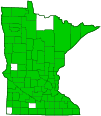crown vetch
(Securigera varia)
Conservation • Weed • Description • Habitat • Ecology • Use • Distribution • Taxonomy
Description |
Crown vetch is a perennial forb that rises from a woody base (caudex), a taproot, and underground stems (rhizomes). The taproot is deep and multiply branched. The rhizomes are fleshy, branched, and up to 10′ long or longer. In their vegetative state plants are usually no more than 12″ tall. When in flower they may be up to 36″ tall. They often form dense tangled mats or mounds, and often large dense colonies that crowd out native plants and limit the establishment of shrubs and trees. The stems are spreading to ascending, 12″ to 48″ long, and branched. They are angled or ridged and hairless or sparsely covered with spreading hairs. They do not have thorns. The leaves are alternate, 2″ to 6″ long, and stalkless or almost stalkless. They are pinnately divided into 9 to 25 leaflets—4 to 12 pairs of lateral leaflets and a terminal leaflet. They do not have tendrils. At the base of each compound leaf there is a pair of small, leaf-like appendages (stipules). The stipules are green, narrowly lance-shaped to narrowly oblong or oblong triangular, and 1 ⁄32″ to ⅛″ long, much smaller than the leaves. They are always completely free of each other, not joined. Older stipules have a dark tip caused by an aggregation of tannin cells. The leaflets are oblong to inversely lance-shaped, ¼″ to 1″ long, and ⅛″ to ⅜″ wide. They are rounded or angled at the base rounded, bluntly pointed, or squared off at the tip, with a minute, sharp point at the tip. The upper surface is green and hairless and usually has dark purple dots (glands) that are visible only with magnification. The lower surface is hairless purplish tinged or mottled. The margins are untoothed. The inflorescence is a spreading, crown-shaped, umbrella-like cluster (umbel) of 5 to 20, usually 10 to 15, flowers rising from upper leaf axils. The stalk of the umbel is 2″ to 6″ long and angled. Each flower is on a ⅛″ to ¼″ long stalk (pedicel). Each pedicel is subtended by a single 1 ⁄64″to 1 ⁄32″ long modified leaf (bract). The bracts are free, not joined, and have dark tips. The individual flowers are ⅜″ to ½″ long. There are 5 sepals, 5 petals, 10 stamens, and 1 style. The sepals are green and are fused for most of their length into a 1⁄32″ to 1 ⁄16″long long, hairless, bell-shaped calyx tube. The 5 petals form a butterfly-like corolla typical of plants in the Pea family. Each of the petals is abruptly narrowed (clawed) at the base. They are organized into a broad banner petal at the top, two lateral wing petals, and between the wings two petals fused into a keel. The banner is pink or purplish-pink and sometimes has a darker raised ridge in the center. It is abruptly arched upright from below the middle. The expanded portion is broadly egg-shaped, ⅜″ to ½″ long, and 3 ⁄16″to 5 ⁄16″ wide. The wings are ⅜″ to ⅝″ long and ⅛″ to 3 ⁄16″ wide. They are also pink but are noticeably paler than the banner, sometimes nearly white. The keel is purple, boat shaped, ⅜″ to ½″ long, and 1 ⁄16″ to ⅛″ wide. Nine of the filaments are long and their filaments are fused. The remaining filament is shorter and is free. The anthers are yellow. The style is slender, 3 ⁄16″ to ¼″ long, and curved upwards. The fruit is a bluntly 4-angled, ¾″ to 2⅜″ long seedpod containing 3 to 12 seeds. It is green at first, becoming straw-colored or tan, then eventually brown when ripe. It is not flattened and is only slightly constricted between the seeds. When it ripens it breaks into one-seeded segments. |
Height |
Spreading; 12″ to 24″ tall |
Flower Color |
Pink |
Similar Species |
When in flower there is no similar species. In its vegetative state it appears similar to species in the Vicia and Lathyrus genera. Securigera is distinguished by the absence of tendrils; a terminal leaflet; an umbrella-like inflorescence; and fruits that break into one-seeded segments at maturity. Crown vetch is the only species of Securigera that is found in Minnesota. |
Habitat |
Moist to moderate moisture. Highway embankments, roadsides, railroads, drainage ditches, meadows, savannas, pastures, old fields, and other disturbed sites. Full or partial sun. |
Ecology |
Flowering |
May to September |
Pests and Diseases |
|
Use |
Crown vetch has been planted extensively since the 1950s on highway embankments in the upper two thirds of the United States to prevent erosion. The practice is now discouraged because its dense colonies often hide rather then prevent soil erosion. It has been used since the 1970s to revegetate abandoned mining sites. It has been and still is planted in gardens as an ornamental. It readily escapes cultivation. Once established, it takes a combination of methods and several years to eradicate. |
Distribution |
||
|
Sources |
|
| 5/17/2025 | ||
Nativity |
||
Native to Western Asia and Europe. Introduced in North America in 1869 or earlier and naturalized. |
||
Occurrence |
||
Widespread; common in the Midwest, including Minnesota. |
||
Taxonomy |
|
Kingdom |
|
Division |
Tracheophyta (Vascular Plants) |
Subdivision |
Spermatophytina (Seed Plants) |
Class |
|
Order |
Fabales (Legumes, Milkworts, and Allies) |
Family |
Fabaceae (Legumes) |
Subfamily |
Faboideae |
Tribe |
Loteae |
Genus |
Securigera |
The genus Securigera was split off from the genus Coronilla in 1989 (Lassen) based on morphological characteristics. Preliminary DNA analysis done in 2000 and 2003 support the segregation. |
|
Subordinate Taxa |
|
|
|
Synonyms |
|
| Coronilla varia | |
Common Names |
|
axseed crown vetch crown-vetch purple crown-vetch purple crownvetch trailing crown-vetch Varia crownvetch |
|
Glossary
Axil
The upper angle where a branch, stem, leaf stalk, or vein diverges.
Bract
Modified leaf at the base of a flower stalk, flower cluster, or inflorescence.
Calyx
The group of outer floral leaves (sepals) below the petals, occasionally forming a tube.
Caudex
A short, thickened, woody, persistent enlargement of the stem, at or below ground level, used for water storage.
Claw
A stalk-like narrowed base of some petals and sepals.
Filament
On plants: The thread-like stalk of a stamen which supports the anther. On Lepidoptera: One of a pair of long, thin, fleshy extensions extending from the thorax, and sometimes also from the abdomen, of a caterpillar.
Pinnate
On a compound leaf, having the leaflets arranged on opposite sides of a common stalk. On a bryophyte, having branches evenly arranged on opposite sides of a stem.
Rhizome
A horizontal, usually underground stem. It serves as a reproductive structure, producing roots below and shoots above at the nodes.
Stipule
A small, leaf-like, scale-like, glandular, or rarely spiny appendage found at the base of a leaf stalk, usually occurring in pairs and usually dropping soon.
Umbel
A flat-topped or convex, umbrella-shaped cluster of flowers or buds arising from more or less a single point.
Visitor Photos |
||
Share your photo of this plant. |
||
This button not working for you? |
||
Robert Briggs |
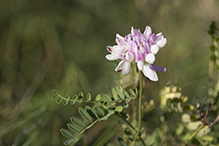 |
Crown Vetch at Spring Lake Park Reserve. Unfortunately, it's becoming more and more prevalent in the unmowed areas. |
Wayne Rasmussen |
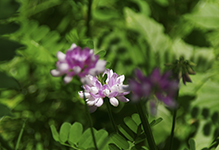 |
MinnesotaSeasons.com Photos |
||
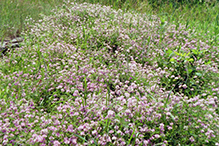 |
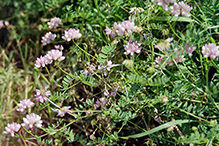 |
|
| Colony | Plant |
|
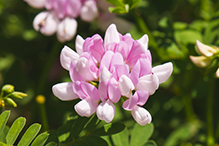 |
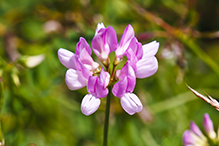 |
|
| Inflorescence | Inflorescence |
|
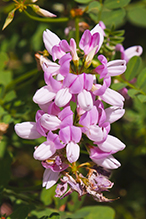 |
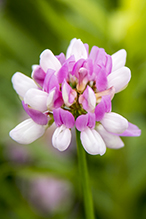 |
|
| Inflorescence | Inflorescence |
|
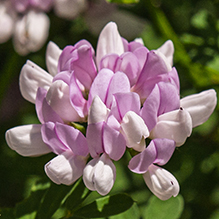 |
||
| Inflorescence |
|

Slideshows |
|

Visitor Videos |
||
Share your video of this plant. |
||
This button not working for you? |
||
|
Other Videos |
||
Environmental Laboratory - U.S. Army Corps of Engineers |
About
Published on Feb 15, 2013 Coronilla varia - Crownvetch |
Cieciorka pstra |
About
Published on Jun 18, 2012 Cieciorka pstra Cieciorka pstra (Coronilla varia L.) -- gatunek rośliny z rodziny bobowatych (Fabaceae). Według nowszych ujęć taksonomicznych gatunek ten włączony został do rodzaju Securigera i ma nazwę Securigera varia L.(Lassen) Svensk Bot. Tidskr. 83:86. 1989. Pochodzi z Azji i Europy, ale rozprzestrzenił się także w Nowej Zelandii i Północnej Ameryce. Jest również uprawiany w wielu krajach świata. W Polsce na stanowiskach naturalnych jest dość pospolity. Morfologia Pokrój Liście Kwiaty Owoc Biologia i ekologia Zastosowanie Surowiec zielarski : Ziele (Herba coronillae)zawierające glikozyd koronilinę, garbniki, gorycze, sole mineralne. Działanie: Napar z ziela cieciorki może być stosowany jako lek pomocniczy w kuracji nerwicy serca, bo posiada zarówno działanie uspokajające, jak i regulujące rytm serca. Napar ten działa ponadto łagodnie moczopędnie. Roślina ozdobna czasami uprawiana ze względu na swoje ładne kwiaty. Nie nadaje się do ogrodu, gdyż jest ekspansywna i swoimi cienkimi kłączami szybko się rozrasta. Może być jednak używana jako roślina okrywowa na skarpach, gdyż dobrze umacnia strome brzegi. |
Crown Vetch Control Using Foam Herbicide for Precision Applications |
About
Published on Jan 24, 2014 How to kill crown vetch (Coronilla varia or Securigera varia) without killing your nearby desirable plants? How to control crown vetch so it doesn't resprout? For this tough job, use the revolutionary foam herbicide system from Green Shoots: http://www.greenshootsonline.com/NewS.... The Green Shoots foam herbicide system has several advantages over conventional spray systems. First, it is highly precise and selective. The foam can be discharged very slowly and placed on the target location. Second, once placed on the target, the foam herbicide sticks to the foliage and tissue of the plant. It doesn't drip like drops from a conventional spray system. Third, the foam herbicide dries slowly. This increases translocation of the herbicide so that the roots can be killed. Fourth, the foam herbicide is highly concentrated. This ensures that the mixture is sufficiently powerful to do the job. As explained in the video, using the foam herbicide system is easy. The herbicide can be placed directly on foliage – either the green leaves or green stems. Alternatively, if you want to remove the target weed immediately, you can cut it and apply the foam herbicide to the remaining stump. If you do a stump application, be sure to apply the foam herbicide immediately after cutting. Perennial weeds like crown vetch have extremely extensive root systems, so be sure to apply the foam herbicide to each stem that you can find. For more tips on dealing with invasive plants, visit Green Shoots News at: https://greenshootsnews.wordpress.com/wp-admin/. |
Garden Design & Care : Growing Crown Vetch |
About
Uploaded on Apr 4, 2009 Growing crown vetch is easily done, as it is part of the legume family that grows heartily with thick roots. See how crown vetch has been used for erosion control with helpful advice from a sustainable gardener in this free video on gardens. Expert: Yolanda Vanveen |

Visitor Sightings |
||
Report a sighting of this plant. |
||
This button not working for you? |
||
| Robert Briggs 11/3/2016 |
Location: Spring Lake Park Reserve Crown Vetch at Spring Lake Park Reserve. Unfortunately, it's becoming more and more prevalent in the unmowed areas. |
 |
| Wayne Rasmussen 6/9/2016 |
Location: Joy Park & Preserve in Maplewood, MN |
 |
MinnesotaSeasons.com Sightings |
||
Blazing Star Prairie Addition Preserve, South Unit Carpenter St. Croix Valley Nature Center Clifton E. French Regional Park Lake Alexander Woods SNA, South Unit Minnesota Valley NWR, Long Meadow Lake Unit Minnesota Valley NWR, Rapids Lake Unit Northern Tallgrass Prairie NWR, Rengstorf Unit P.N. and G.M. Nelson Wildlife Sanctuary Prairie Creek WMA, Koester Prairie Unit |

|
Created: 8/23/2005 Last Updated: © MinnesotaSeasons.com. All rights reserved. |
